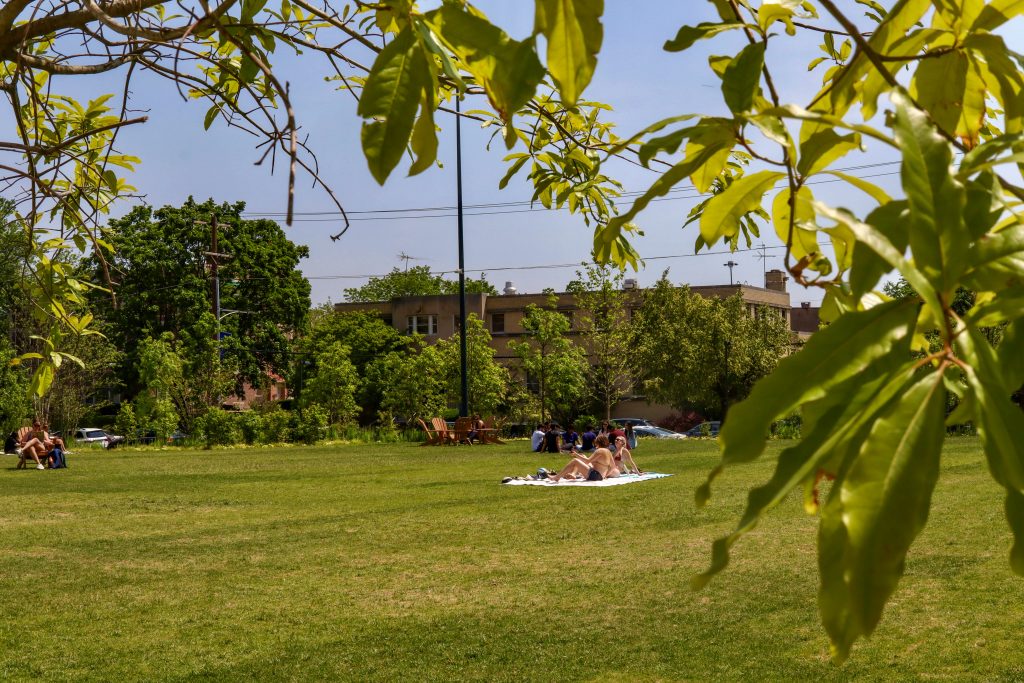
On May 21, Drexel University was honored with a Green Grounds Certification by Re:wild Your Campus, an organization that “works to transform college and university grounds into healthier, chemical-free spaces by empowering students and institutions to eliminate synthetic herbicides and adopt ecologically sustainable land management practices.”
Drexel was recognized as a Silver Campus, and is one of 12 colleges nationwide to be certified as green. Re:wild issues the award based on three specific stipulations: “(1) Campus grounds departments collaborate with students and engage students in campus land care, (2) campus commits to procuring new technology that is electric for landscaping, and (3) campus is reducing synthetic fertilizer use and is transitioning to OMRI Certified Organic fertilizers.”
This award means more than a plaque or a title: it is an acknowledgment that Drexel’s Facilities department is taking meaningful strides towards being greener. For students who care about such things – and for those who simply want to lie on the grass on Lancaster Walk without worrying about chemicals – that is tangible. The certification shows that the commitment Drexel is making to sustainability is not just about catchphrases for campus brochures, but means real work is being done.
When looking at Drexel Park and the stretch of lawn on the Quad, one can see what is possible with stewardship. In the background, there is a quiet but growing sense of pride among the stewardship professionals who have worked behind the scenes. The day-to-day labor is only part of their work. There is planning, investment and care that contribute to the very different approach Drexel will use to present and maintain its campus. Its grounds are being put to work demonstrating practical innovations to serve people and the planet.
Talking with groundskeepers Anthony Gale and Scott Dunham reveals that their work is not easy. There is no shortcut to stop the use of synthetic chemical additives on turf and keep out weeds. Weeds simply come back, and without spraying them down, the only option is hand-pulling them.
They balanced the soil levels, monitored pH and tested new organic solutions that are not certain to work. Yet, the results speak for themselves. The grass is greener in color but also in principle. Just remember that behind the beauty of the green grass, there is a ton of effort that makes this possible.
As Dunham mentioned, a large part of the change was due to the students themselves. Kacy Gao, an undergraduate working with Re:wild Your Campus and Drexel’s Eco Reps, did a lot of legwork to help get the ball rolling. What started as a test plot in Drexel Park has replaced how Facilities mows lawns across the entire campus.
It is also a reminder that sustainability is not about flashy things. Sometimes it looks like a higher mower blade height or a rain-fed spring that helps the grass survive without extra water. Sometimes it smells like fertilizer (which is made from poultry waste). However, every one of these decisions is part of a larger movement – a commitment to steward the land as well as the people using it.
Visibility will be a challenge going forward. Dunham acknowledged that a large percentage of the Drexel community does not know about the green practices they have adopted. This certification has the potential to change that. If Drexel embraces it, promotes the recertification, involves more students and even places some signage about organic turf zones, it could be part of Drexel’s differentiators.
Beyond certification, the technology that Facilities uses is evolving. Drexel has slowly started moving toward electric equipment like electric blowers and mowers, which produce fewer emissions and are quieter. These machines are expensive, and funding is always a consideration, but the trend is clear: as old equipment dies, replacement equipment will be electric and quieter.
At its core, the Green Grounds Certification signals a shift in perspective. It is not simply a response to potential climate change consequences, but it is a shift in how people on campus can experience the natural world on a small scale and day-to-day — seeing the grass underfoot not as a commodity to exploit for a specific use, but as something alive and worth saving and sustaining to better serve the planet.
Now, at a time when many universities are feeling pressure to do more than just aspire to sustainable practices, Drexel has a clear example of the “restoration” process – something that they can point to, with evidence of work done, as the Silver designation signals that Drexel is not just promising a sustainability journey, but moving forward, and putting in the work.
As the student group grows and works to sustain existing landscapes once they go green, and with a growing Office of Sustainability, Drexel’s sustainability journey is set up to continue along this course.
Next time you walk across campus and catch yourself admiring Drexel’s grass, know that it is real, it is certified, and it is a win that belongs to everyone on campus.


